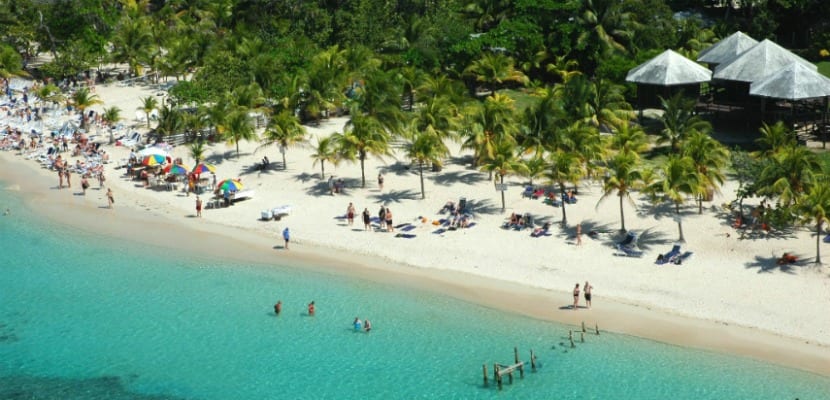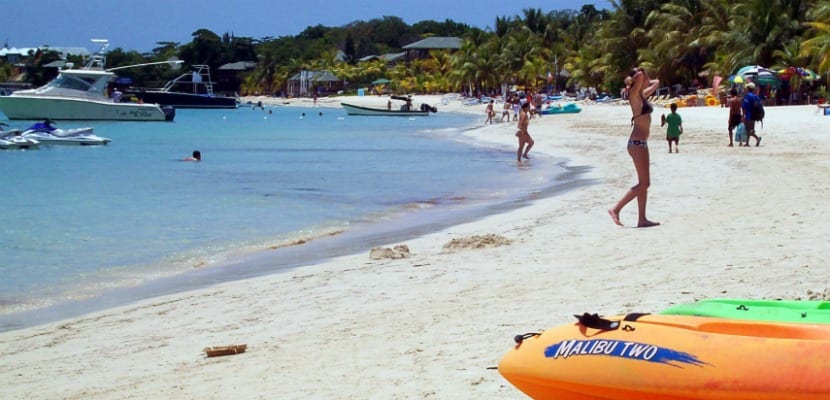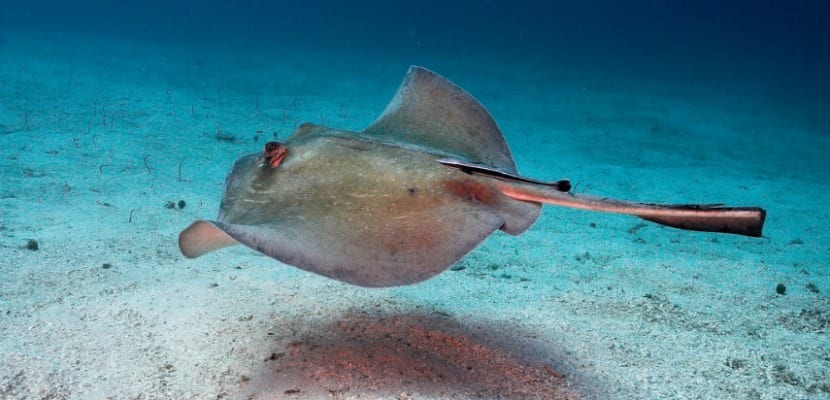
Image via Hondudiario
Islas de la Bahía, in Honduras, is one of the most spectacular tourist destinations in Latin America. Last year it was recognized by Tripadvisor as the third most popular archipelago in the world and much of that fame is due to its beautiful beaches.
Within the Bay Islands, Roatán, Útila and Guanaja stand out, which are home to the best seven beaches of this island group. After the jump we will learn a little more about all the possibilities that this archipelago offers its visitors.
Roatan

Roatan's dreamy landscapes make this site look like something out of a postcard. It is one of those places designed for the rest of those looking for an idyllic tropical vacation. Crystal clear waters, white sand beaches and the second largest coral reef in the world. A permanent tourist attraction for diving enthusiasts. But not the only one, since you can also snorkel to get an unforgettable vision of Honduran maritime life.
To discover the most authentic Roatán you also have to take a walk through the local communities, such as Coxen Hole, where the tourist can learn about the settlements of the Caribbean indigenous peoples (specifically the Garífuna) and get lost in the wild Cayos Cochinos.
Other towns that have a lot of charm in Roatán are West Bay, a town well known for its resorts and its paradisiacal beaches perfect for practicing water sports. On the other hand, the West End municipality is where there is more atmosphere and fun as it is full of tourist establishments, restaurants and shops, without forgetting its nightlife.
Puerto Real, Oak Ridge, Jonesville, Punta Gorda, Barbareta, Puerto Francés… each of these communities is worth a visit. Either to enjoy a few days of rest or to not stop for a second walking along the beach, horseback riding, fishing or swimming with dolphins.
guanaja

Image via Honduras Tips
Guanaja is one of the three islands that make up the archipelago of the Bay Islands, in the Caribbean of Honduras. In 1502 it was discovered by Christopher Columbus and called it "Island of the Pines" due to the large number of trees that still populate the island. Considered the Venice of the Caribbean, you can visit the thirteen beaches that make it up aboard a curious taxi-boat.
It is not surprising that it is the best communicated island of all those in the Bay since its fleet of taxis-boats is joined by a small commercial airport that connects La Ceiba, in Honduras, and a ferry route that connects with the city of Trujillo twice a week. Guanaja is located 70 kilometers north of the Honduran coast and approximately 12 kilometers from the island of Roatán.
Guanaja is the second largest island in the Bay Islands archipelago. It presents extensive pine forests and a diversity of terrestrial and marine species that give this place an incredible biodiversity, which makes Guanaja a paradise for those who enjoy practicing ecotourism.
Another reason to know this island is in the depths of the waters that surround it. The healthiest coral reefs in the world surround Guanaja, where its beaches witness the best sunsets and sunrises in the Bay Islands. But the night on this island also has its appeal since it has one of the largest banks of stars in the Caribbean.
Use it

In the Honduran Caribbean, Útila is the smallest of the islands that make up the Bay archipelago. The island is practically uninhabited except for the extreme southeast, where Easter Harbor, its main town, and most of the tourist facilities are located.
If Útila is known in the world for something, it is for being one of the cheapest and safest destinations to enjoy all the possibilities that the island offers in terms of water and underwater sports. Attracted by this, thousands of visitors come every year to learn how to dive in the sea and obtain the basic certificate of open water diving, and even that of diving instructor. However, other activities that can be carried out in Útila related to the sea are snorkeling and fishing.
Visitors with an adventurous spirit can unleash this facet in the northern, central and western areas of Útila. since here are practically unexplored mangrove forests, wetlands and savannas.
These virgin green spaces have allowed the island to conserve a unique flora and fauna of the Caribbean biodiversity. As a curiosity, the black garrobo lives here, an endemic reptile belonging to the iguana family. Its importance in Útila is such that every year dozens of volunteers come here to help the conservation of the species at the Iguana Station scientific station, sponsored by the Frankfurt Zoological Society and the Senckenberg Nature Research Society along with other national and international institutions. .